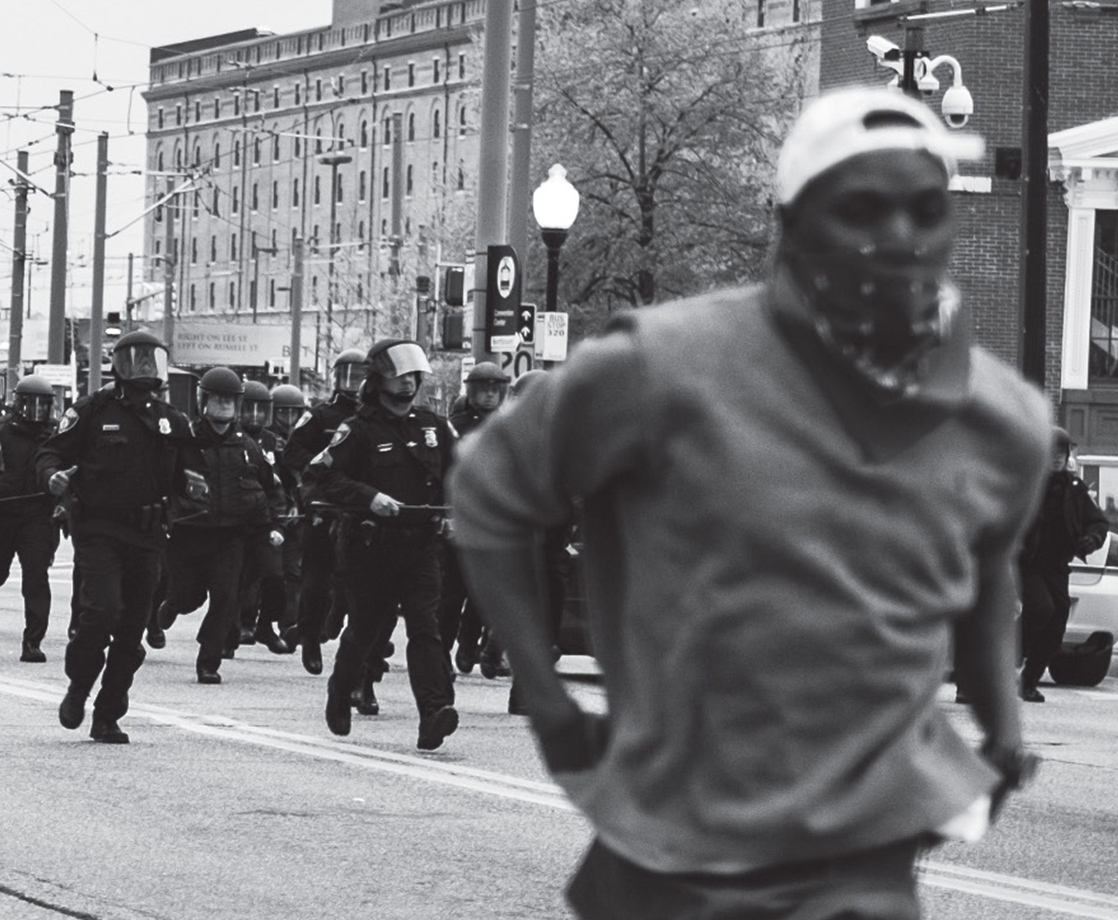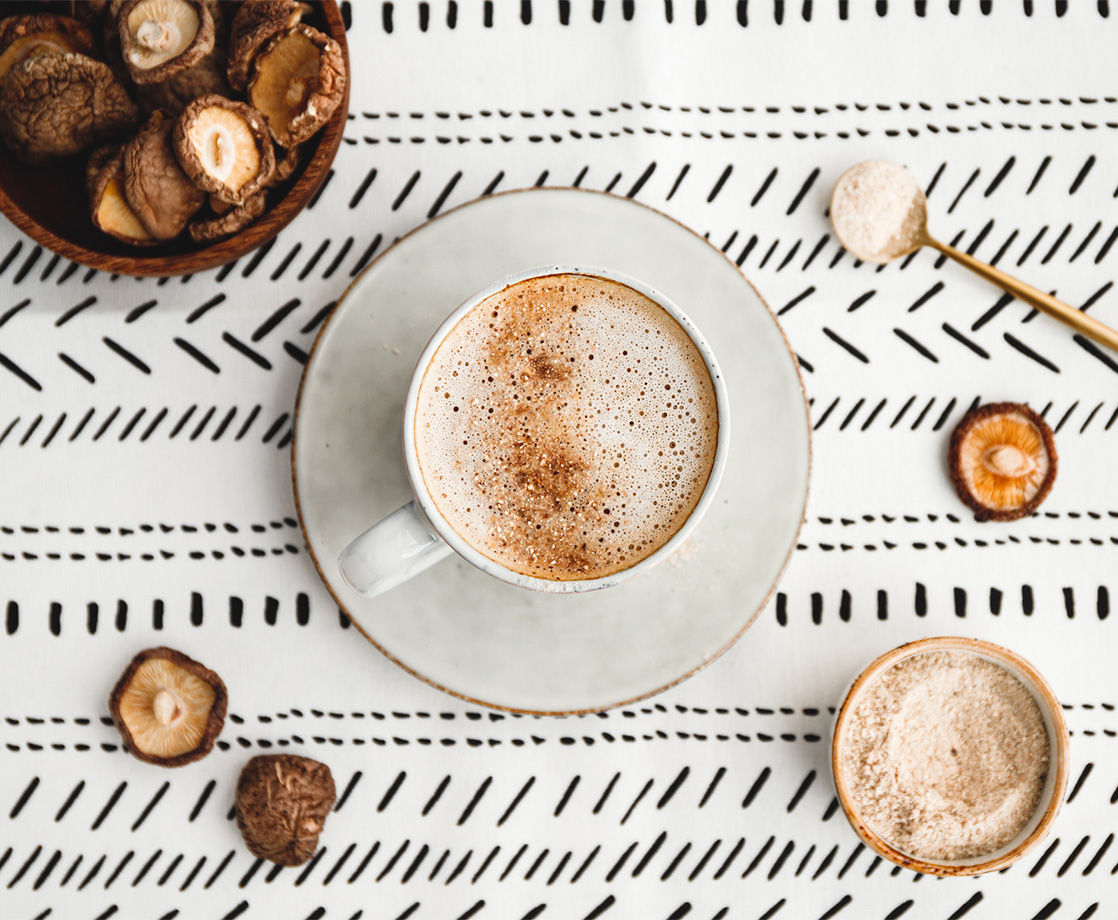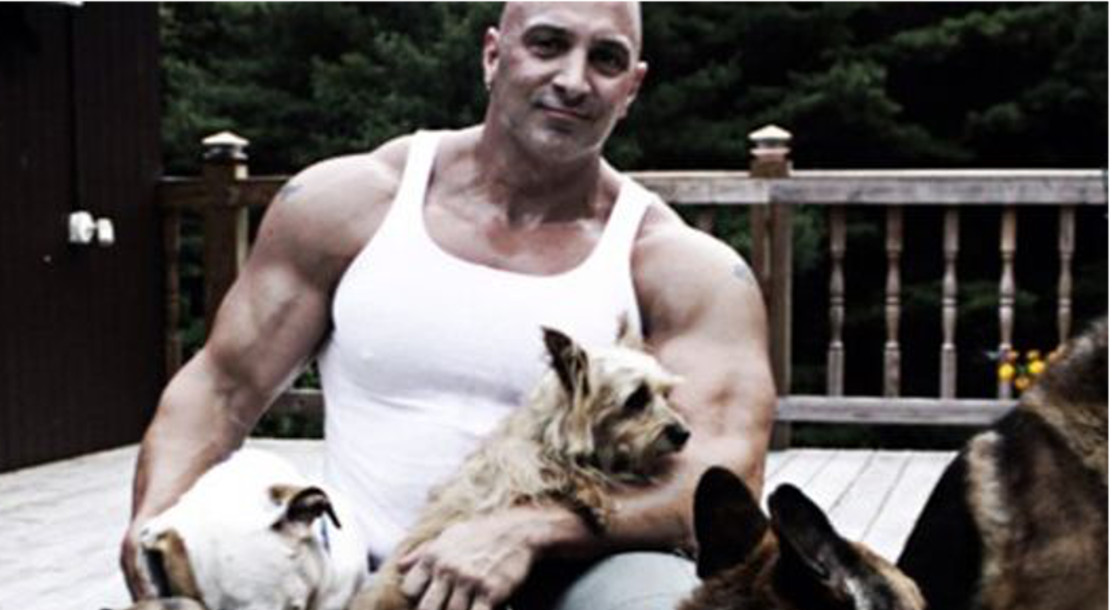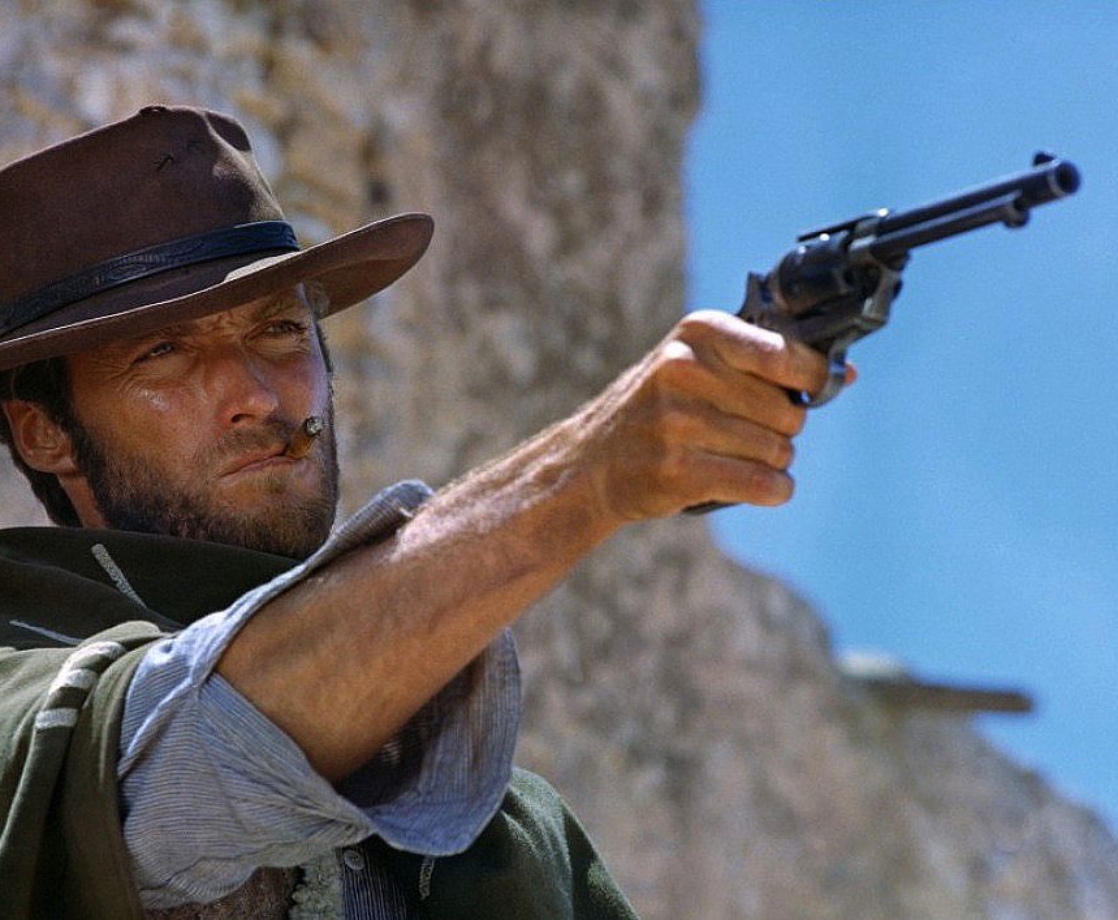All photos by Devin Allen, courtesy of Haymarket Books
Devin Allen didn't come from a formal background in photography. In fact, he started taking pictures by chance. A good friend of his wanted to start a poetry night, and as a party promoter Allen knew lots of people. He didn't believe that a poetry night in Southwest Baltimore would be successful, and even told his friend nobody would come. But they did it anyways, people started coming, and then more and more kept showing up. Allen didn't even write poetry and didn't like talking in front of people, but he wanted to be involved as more than a promoter.
It was 2012, Instagram had just come online, and the new social media platform was starting to get popular. Allen's friend had a camera. "We wanted to take pictures and promote the poetry night and put them online," he told MERRY JANE. "Eventually we started putting the photos on t-shirts and selling them at the poetry nights, too." Devin found that not only did he have an interest in taking photos — he liked to observe the "vibrations and energies" among his peers expanding while they interacted — but he had an affinity for it. A natural "God-given talent," as he would say.
In 2013, his grandmother helped him purchase his first camera and it was a wrap. Devin used to hustle with his friends, but he didn't want to sit on the street, he didn't want to be on the stoop, he didn't want to be involved in the scene. He was 24-years-old and he wanted more. He wanted to be involved with the arts and venture into that world professionally. "Both my best friends were killed, and the only reason I wasn't with them was because I had booked photo shoots," Allen said. "If I wasn't into photography I'd be dead. That really inspired me to take this serious, and [afterwords] I really dived into it."
When Michael Brown was killed and Ferguson became part of the national conversation, Allen was there with his camera, documenting the massive response despite being only a year-and-a-half into photography. When Freddie Gray was killed and Baltimore erupted into riots, Allen had been shooting for almost three years. In May of 2015, Time Magazine, published his engaging and in-your-face photo of a teen running away from a battalion of cops. It was only the third time an amateur's photo had gained that honor.
Since then he has appeared on Oprah, won the 2017 Gordon Parks Foundation Fellowship, and had his work appear in the New York Times, the Washington Post, and New York Magazine. He's also published his first monograph, A Beautiful Ghetto, out September 12 through Haymarket Books. The book of photos captures the images that Allen took in Baltimore during what he calls "the uprising" — a vivid look into what happened in Baltimore in the weeks after Freddie Gray's murder through the eyes of a local. MERRY JANE caught up with Devin Allen to discuss his new photo book, and the young and prolific artist shared some thoughts and stories behind a number of select images.
This interview has been edited for length and clarity

Devin Allen: Me and Freddie Gray, we had mutual friends. Some of his friends and peers were my friends and peers. When Freddie Gray died, it just hit home because I've been subjected to police brutality myself. And just watching everything that unfolded in person, I felt like I wanted to control the narrative. I felt that no one could tell the story better than me. It's about the death of Freddie Gray, but also everything he faced. Everything that he saw everyday, I saw myself, too, because I'm from West Baltimore.

Devin Allen: I wanted to counteract what the media was going to do. I knew what was going to happen when Freddie Gray died. Baltimore has its own mentality, that we don't back down, we don't give up, we are very resilient. We don't quit. We never lay down and die. No matter what the circumstance or what we have to jump over. I knew that the protests were going to happen. I knew that the police were not going to be able to stop us from protesting. I went out to just document the protest and everything else that happened because I wanted to tell the story.

Devin Allen: I knew there would be a lot of confrontation because of what the officers do to us here in Baltimore. If someone is screaming, I want to capture their pain. I got locked up in 2009 because the cops put weed on me. They were so mad when they couldn't find anything that they put weed on me. I felt that I could do my community good by capturing the whole story and make sure the story was told correctly. I felt obligated as an artist. Every image [in A Beautiful Ghetto] is very special to me. I vibe off connections and how people interact. When I was capturing the images, my adrenaline was running and I wasn't really thinking that much. I was just trying to get every image that I felt connected to.

Devin Allen: People complain all the time about the media telling a one-sided story. I wanted to tell the story of how my city was actually moving when Freddie Gray died. It's about capturing images that tell the story, but also about inspiring others. Some people were angry and wanted to flip over police cars and shit. But some people were peaceful. It was beautiful, a beautiful tragedy, and I wanted to show that — the good, the bad, and the ugly. In my book, you see therapeutic moments, sad moments, disgruntled moments, the angry moments. I wanted to capture all these emotions.

Devin Allen: It's sad to say it, but with the police brutality going on it's a war. We can fight all day and we will continue to fight, but my art is meant to inspire the next generation. In my mind, that's what I wanted to do. Because if we don't control the narrative, it can be changed. Historically, our narrative, as far as the black community is concerned, has been controlled by our oppressors. We are getting choked out over bootleg CDs, killed in front of our women and children, the brutality never stops. The media only focuses on the negative aspects.

Devin Allen: If you look through the book, you see all these different aspects of the uprising that people never see — a person who's smiling, or a person who's praying. As I look at these images, I can't believe I captured them. I can't believe I have a book coming out. I can't believe that I'm at this point in life. I still live in Baltimore and deal with Baltimore. But the book is inspiring and that's all I wanted to [create]. The book is my Reasonable Doubt. This is my Illmatic. That's where I'm at. I don't know what the future holds, but we will see where the pieces fall.

Devin Allen: There were so many protestors. We confronted the police at the baseball stadium in downtown Baltimore, Camden Yards. We got called "niggers" and "monkeys" by the drunk Orioles fans. They were throwing hot dogs and shit at us. That's what started the destruction of the police cars. I just remember this young man throwing something, he ran past me to throw something. At that time we didn't realize where we were at. Next thing you know the police were forming up. The guy ran down and threw something at them and when he ran back into the frame I just snapped the photo. After I shot the image, I almost got ran over by police.
I didn't think this photo was going to be in Time Magazine. I wasn't paid to be there. I was just taking pictures. I literally shot the picture for my Instagram page that I dedicated to Freddie Gray. I put the image up on social media and then I kept shooting for the rest of the day. I woke up the next day and I had 20k followers. And I was getting DMs from DJ Drama asking me about what was going down in Baltimore. That's how it all started.

Devin Allen: A riot is a riot, but when you say "uprising," it's a whole lot more. An uprising is when people who haven't been heard rise up. When an uprising happens, there are so many different aspects to it. It's not just rioting. You have that aspect of looting and violence, but you also have prayer circles, town hall meetings, the community coming together to clean up. And then you have people like me who have been uplifted by the events and just keep rising. The uprising shows that Freddie Gray was literally arrested for nothing, he was stomped for nothing, they broke his legs, and then he didn't even make it to the jail because they broke his spine. It shows how brutal the police are. And all the police officers got off.

Devin Allen: Due to the uprising, we got a lot more media coverage and people wanted to throw money around to help. We have a voice and we have a platform. That is what the uprising gave us. When these things happen, a spiritual connection [develops] among all of us that are in this struggle. Back when we had leaders like Malcolm X and MLK, we didn't have social media and had to live vicariously through them. That was our social media. Malcolm X was a walking Instagram. But now with social media, we can get our voices heard [to a much larger audience]. With these uprisings in Ferguson and New York and Baltimore, we are getting heard. We will be talking about Freddie Gray for the next 100 years.

Devin Allen: I feel like a newborn baby. Like, I was just born during the uprising. I'm a whole new person from who I was before I went into the uprising. The way I move, the way I think, the way I look at the world. As a black man, I feel how powerful I am. I'm not this amazing artist, but I'm happy that my work can have impact and inspire others. That was always the initial goal. When I started photography, I just always wanted to great. I wanted to be Gordon Parks, and to have my work compared to his is the greatest honor of my life. The uprising is everything that happens after the initial riot that was fought for the movement. My goal with this book is to create more conversations.
Join Devin Allen on September 15 at The Gordon Parks Foundation in Pleasantville, NY for the opening reception of his "A Beautiful Ghetto" exhibition. Click here for details and follow him on Instagram
"A Beautiful Ghetto" is out September 12 through Haymarket Books. Order your copy here
Follow Seth Ferranti on Twitter











